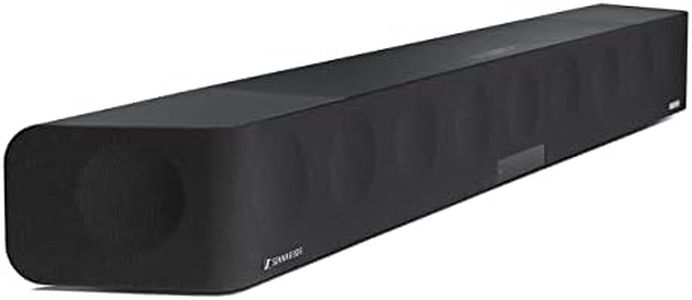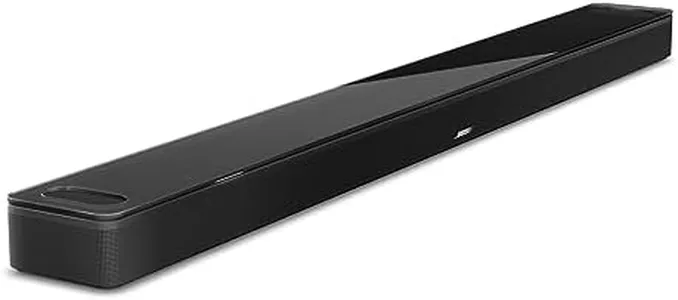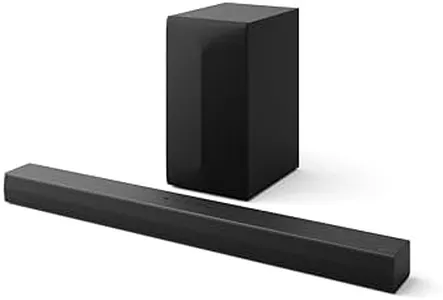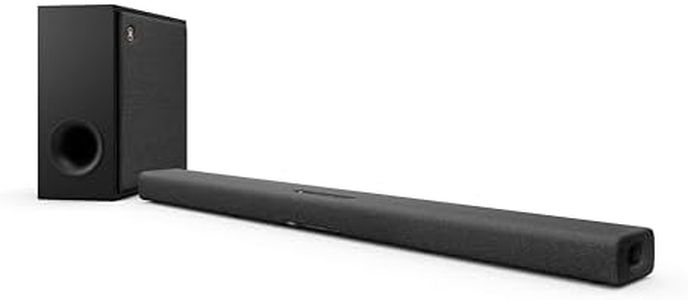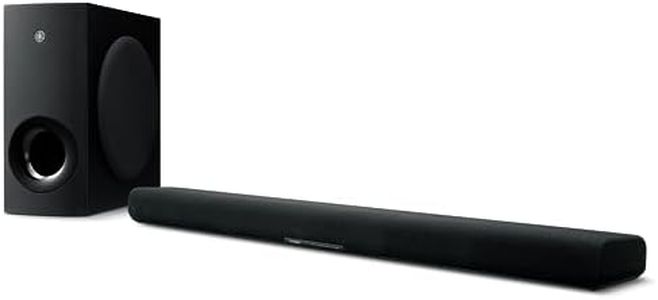We Use CookiesWe use cookies to enhance the security, performance,
functionality and for analytical and promotional activities. By continuing to browse this site you
are agreeing to our privacy policy
10 Best Sound Bars
From leading brands and best sellers available on the web.By clicking on a link to a third party's website, log data is shared with that third party.
Buying Guide for the Best Sound Bars
Choosing a sound bar is all about improving your audio experience at home. Whether you want to better hear dialogue in movies, enjoy music, or enhance your gaming setup, a sound bar can make a big difference compared to your TV's built-in speakers. The key is to consider your room size, your listening habits, and what features will truly matter for your daily use. Instead of getting lost in brand names or marketing claims, focus on core specifications that match your needs and the space where you'll use the sound bar.ChannelsChannels refer to the number of speakers and paths for audio in the sound bar. This spec is important because it affects the surround sound experience and audio clarity. Basic sound bars have 2.0 or 2.1 channels (stereo or stereo plus subwoofer) and suit smaller rooms or simple needs. Moving up, 3.1 adds a center channel for clearer voices, while 5.1 and higher add surround speakers for a more immersive sound, ideal for larger rooms or movie enthusiasts. Pick a channel setup that fits your space and whether you want basic enhancement or cinematic surround sound.
Size and DesignThe physical size and style of the sound bar are crucial because they need to fit your entertainment area, match your TV, and suit your decor. Compact, slim models are good for small rooms or if you want the sound bar to be unobtrusive, while larger, longer sound bars can better match big TVs and offer broader sound. Decide based on the space you have—measure the available area and look for a sound bar that will fit without blocking your TV or looking out of place.
ConnectivityConnectivity options determine how easily the sound bar will connect to your TV and other devices. The most common options are HDMI ARC, optical, Bluetooth, and sometimes Wi-Fi for streaming. HDMI ARC is often the easiest for modern TVs and lets you use your TV’s remote; Bluetooth lets you play music from your phone; and optical is a reliable option for many TVs. Choose the connections that match what your TV and other devices support to ensure a hassle-free setup.
SubwooferA subwoofer enhances bass, making explosions, music, and deeper sounds more impactful. Some sound bars include a built-in subwoofer, while others come with a separate one, which can be wired or wireless. If you love bass-heavy music, action movies, or want a fuller sound in a big room, a sound bar with a separate subwoofer is best. For smaller spaces or simple use, a built-in subwoofer or no subwoofer might be enough.
Audio FormatsSupport for audio formats like Dolby Audio, DTS, and Dolby Atmos matters because these technologies give richer and more immersive sound. Basic sound bars support standard stereo or basic surround; more advanced models handle Dolby Atmos or DTS:X for a 3D audio experience, making sound seem to come from all around you. If you're a casual user, you might not need advanced formats, but if you want a home theater feel, look for a sound bar supporting these audio formats.
Smart FeaturesSome sound bars offer smart features like voice assistants, streaming apps, or integration with smart home systems. This can be convenient if you want hands-free control, multi-room audio, or direct streaming from services like Spotify or Apple Music. Decide if these extras fit into your lifestyle, or if you prefer a straightforward sound upgrade without smart features.
